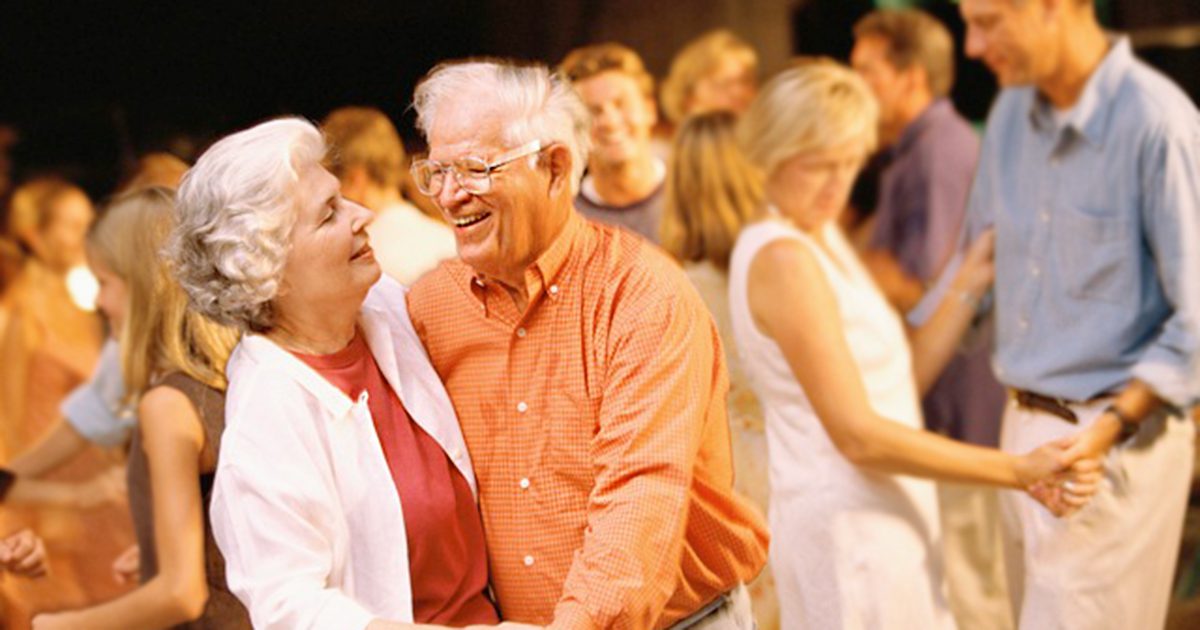Let’s face it.
There are a few fundamental truths in life. We’re born. We age. We die.
How we spend the years nurturing our bodies and minds in the middle is largely up to us. But, we can’t avoid the inevitable.
We’re going to get older.
And with age will come the inevitable decline in mental and physical fitness, made worse in some by conditions like Alzheimer’s disease.
But, according to results of a new German study, there are things that older people can do to combat and reverse signs of aging.
Namely…dancing.

The study, published in the open-access journal Frontiers in Human Neuroscience, found that older people who routinely partake in physical exercise can reverse the signs of aging in the brain, and dancing has the most profound effect.
“Exercise has the beneficial effect of slowing down or even counteracting age-related decline in mental and physical capacity,” says Dr. Kathrin Rehfeld, lead author of the study, based at the German Center for Neurodegenerative Diseases, Magdeburg, Germany.
“In this study, we show that two different types of physical exercise (dancing and endurance training) both increase the area of the brain that declines with age. In comparison, it was only dancing that lead to noticeable behavioral changes in terms of improved balance.”
For the study, 68 elderly volunteers were split into two groups and assigned to eighteen-month weekly courses consisting of either learning dance routines or endurance and flexibility training.
Results revealed that both groups showed an increase in the hippocampus of the brain – the region prone to age-related decline and is affected by diseases like Alzheimer’s. It also plays a key role in memory and learning, as well as keeping one’s balance.
While results of the research support previous findings that physical activity helps combat age-related brain decline, this is the first study to successfully identify which types of exercise are most effective.
To assess this, researchers assigned participants different exercise routines. The traditional fitness training program conducted mainly repetitive exercises, such as cycling or Nordic walking, while the dance group was challenged with something new each week.
Dr. Rehfeld explains, “We tried to provide our seniors with the dance group with constantly changing dance routines of different genres (Jazz, Square, Latin-American and Line Dance). Steps, arm-patterns, formations, speed, and rhythms were changed every second week to keep them in a constant learning process. The most challenging aspect for them was to recall the routines under the pressure of time and without any cues from the instructor.”
Researchers hypothesize that the extra challenges account for the noticeable difference in balance displayed by those participants in the dancing group. Dr. Rehfeld and her colleagues are continuing to build on this research with innovative trial fitness programs that have the potential of maximizing anti-aging effects on the brain.
“Right now, we are evaluating a new system called “Jammin” (jamming and gymnastics). This is a sensor-based system which generates sounds (melodies, rhythm) based on physical activity. We know that dementia patients react strongly when listening to music. We want to combine the promising aspects of physical activity and active music making in a feasibility study with dementia patients.”
Dr. Rehfeld concludes with advice that should motivate us all to hit the dancefloor.
“I believe that everybody would like to live an independent and healthy life, for as long as possible. Physical activity is one of the lifestyle factors that can contribute to this, counteracting several risk factors and slowing down age-related decline. I think dancing is a powerful tool to set new challenges for body and mind, especially in older age.”
Whether you’re a skilled dancer or battling two left feet, it’s never too late to get down to “Billie Jean.”




